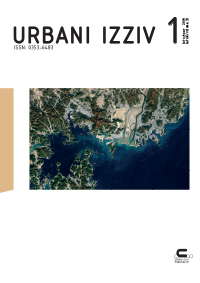Implementing the living streets concept by transforming streets in the central business district of Peshawar, Pakistan
Implementing the living streets concept by transforming streets in the central business district of Peshawar, Pakistan
Author(s): Maryam Aman, Abdul Waheed, Malik Asgha Naeem, Syed Akhtar Ali ShahSubject(s): Social Sciences, Rural and urban sociology, Transport / Logistics
Published by: Urbanistični inštitut Republike Slovenije
Keywords: living streets;pedestrian safety;liveability;pedestrianization;accessibility;central business districts;sustainability;
Summary/Abstract: The idea of living streets has recently evolved and is currently being considered in urban planning and development for cities. The main purpose of the living streets concept is to provide safe access for all types of traffic, thus focusing on the overall sustainability of a city. This study investigates the characteristics of urban arteries in Peshawar’s central business district (CBD) from the perspective of the living streets concept to form a basis for policy measures that can be adopted to improve the CBD. The study hypothesizes that the living street infrastructure in the CBD does not accommodate the needs of various users (shoppers, residents, employees and those visiting for recreation). A field survey, including an observational survey and questionnaire, was conducted to identify and analyse basic public infrastructure in the CBD. Issues such as noise, air pollution, litter, a lack of appropriate public transit and pedestrian infrastructure, and poor traffic management were discovered. Strong dissatisfaction was recorded when the respondents were asked about current pedestrian and on-street parking arrangements. The field survey also found that the current pedestrian arrangements were insufficient for pedestrian needs, and the absence of street furniture discouraged community engagement in the study area.
Journal: Urbani izziv
- Issue Year: 30/2019
- Issue No: 1
- Page Range: 75-86
- Page Count: 12
- Language: English

